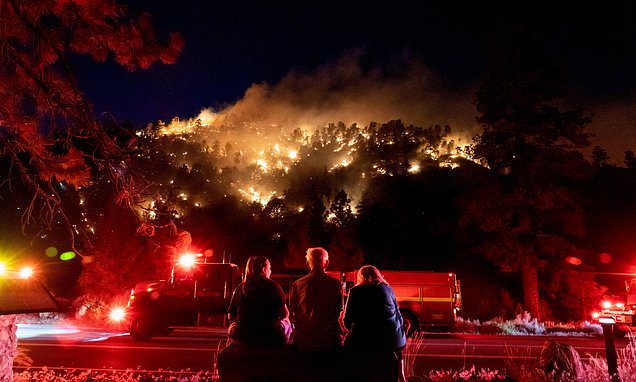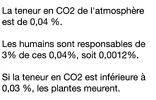The Portuguese government has its mouth full of going green. Citizens put up with a lot, especially with the public sector in some sort of free fall, yet when it comes to a direct danger to livelihood and health, people are putting up fierce fights. F.i. protest groups and local residents worked together and said NO to the plans of installing a mega solar farm by Spanish energy giant Iberdrola involving over 175,000 panels, planned to cover a key water catchment area in the Sotovento Algarve, in the south.
The mega solar farm (called the Estoi Photovoltaic Plant project), which Iberdrola intended to install in an area designated as an ecological reserve for the recharge of aquifers, the protest group Probaal actually did the homework of the government. They worked diligently for years, submitting around 175 pages of documentation to the public consultation process; with 75 pages of technical and legal arguments and 100 pages of supporting materials, including hydrological and biological studies specific to the project area. This had been their long-term plan but what surprised everyone was that in the end, 13 other groups and 847 individuals would also make submissions. A great example of how the fight for the good of everyone in a transparent, honest way inspires many. During these last two years of preparing arguments Probaal raised awareness of the problems that would be caused if a solar power plant was allowed to be built on this ecological land. They spread information through press, social media and held public meetings on site. There’s power in numbers: the local municipality told the group that it had tried to get Iberdrola to change its mind for the last two years, to no avail.
And three days ago, the Portuguese Environment Agency APA released its negative Environmental Impact Declaration, saying: “As a result of the assessment carried out, direct and indirect negative impacts were identified that are very significant, irreversible, cannot be minimised or compensated for in terms of factors that are crucial to the assessment of the project, namely ecological systems, water resources, the socio-economy and the landscape. Accordingly, an unfavourable decision is issued for the Estoi Photovoltaic Plant project.’’ And "the location proposed is one of “maximum infiltration, which is just as important, if not more important, in terms of guaranteeing the infiltration of water into the soil, guaranteeing the future in environmental terms, guaranteeing the quality of such an essential asset, and maintaining it in good condition should be a priority. APA believes that the scarcity of water outweighs other concerns, such as energy.’’
In northern Portugal, there is fierce resistance to the opening of an open pit lithium mine in Covas do Barroso, a village in northern Portugal of just 100 residents, mainly farmers, by British company Savannah Resources Plc., which was on 31st May 2023 given the green light (DIA) to go to the next phase in the licensing process.
The Barroso mine is a high-grade, low-iron, lithium project, in a place that is also a world heritage site for agriculture. Savannah Resources Plc expects to commence production in 2025 and hopes to extract 5,000tpa of lithium from Barroso, notably for electric vehicle batteries. Opponents of this project have been in this fight for five years. According to this article protesters and residents held a camp and demonstration in Covas do Barroso in August, and they are ready to continue their fight.
“If this project goes ahead, it will have to be carried out by force,” one of the principal opponents, Nélson Gomes. “It will have to be done against the will of the population. This is a project that goes against everything and everyone,” he said.
The association Unidos em Defesa de Covas do Barroso has been campaigning against this plan since its inception. It is backed by the municipality of Boticas whose mayor “reacted with sadness”, confirm reports, when the DIA was granted, stressing the mine would put an enormous amount of local investment in livestock farming, agriculture and tourism at risk.
The mine is also opposed by environmental organisations which concur wholeheartedly with the premise that mining activity will negatively affect the quality of underground water sources beyond the fact that it will also require large quantities of water in order to operate – therefore putting the area’s sustainability at risk. “Water is the most important resource we have, and we have to preserve it,” Nélson Gomes reiterates. “Since mining is one of the activities that consume the most water, this is, in fact, one of our biggest concerns: the water they will need for their mining and the water they will pollute.”
Moreover, Savannah estimates that the mine has a duration of 17 years, yet experts have suggested even the estimated duration is dubious and there may not be the reserves touted, in which case this project will have disrupted lives and businesses in a rural community for even less in terms of ‘economic benefit.’ Some assess the duration at half a dozen years only.
The APA’s decision allows the Barroso project to progress to the next stages of the licensing process, which will include a social impact assessment. The regulator has already said the project will need to offer a “socio-economic compensation package” that includes, for instance, paying royalties to the municipality where the mine will operate.
I would think that the APA's arguments in the solar farm case relating to the scarcity of water trumping other energy concerns could be applied to the lithium project as well, leading to denial of a final operating license. One can but hope...
The mega solar farm (called the Estoi Photovoltaic Plant project), which Iberdrola intended to install in an area designated as an ecological reserve for the recharge of aquifers, the protest group Probaal actually did the homework of the government. They worked diligently for years, submitting around 175 pages of documentation to the public consultation process; with 75 pages of technical and legal arguments and 100 pages of supporting materials, including hydrological and biological studies specific to the project area. This had been their long-term plan but what surprised everyone was that in the end, 13 other groups and 847 individuals would also make submissions. A great example of how the fight for the good of everyone in a transparent, honest way inspires many. During these last two years of preparing arguments Probaal raised awareness of the problems that would be caused if a solar power plant was allowed to be built on this ecological land. They spread information through press, social media and held public meetings on site. There’s power in numbers: the local municipality told the group that it had tried to get Iberdrola to change its mind for the last two years, to no avail.
And three days ago, the Portuguese Environment Agency APA released its negative Environmental Impact Declaration, saying: “As a result of the assessment carried out, direct and indirect negative impacts were identified that are very significant, irreversible, cannot be minimised or compensated for in terms of factors that are crucial to the assessment of the project, namely ecological systems, water resources, the socio-economy and the landscape. Accordingly, an unfavourable decision is issued for the Estoi Photovoltaic Plant project.’’ And "the location proposed is one of “maximum infiltration, which is just as important, if not more important, in terms of guaranteeing the infiltration of water into the soil, guaranteeing the future in environmental terms, guaranteeing the quality of such an essential asset, and maintaining it in good condition should be a priority. APA believes that the scarcity of water outweighs other concerns, such as energy.’’
In northern Portugal, there is fierce resistance to the opening of an open pit lithium mine in Covas do Barroso, a village in northern Portugal of just 100 residents, mainly farmers, by British company Savannah Resources Plc., which was on 31st May 2023 given the green light (DIA) to go to the next phase in the licensing process.
The Barroso mine is a high-grade, low-iron, lithium project, in a place that is also a world heritage site for agriculture. Savannah Resources Plc expects to commence production in 2025 and hopes to extract 5,000tpa of lithium from Barroso, notably for electric vehicle batteries. Opponents of this project have been in this fight for five years. According to this article protesters and residents held a camp and demonstration in Covas do Barroso in August, and they are ready to continue their fight.
“If this project goes ahead, it will have to be carried out by force,” one of the principal opponents, Nélson Gomes. “It will have to be done against the will of the population. This is a project that goes against everything and everyone,” he said.
The association Unidos em Defesa de Covas do Barroso has been campaigning against this plan since its inception. It is backed by the municipality of Boticas whose mayor “reacted with sadness”, confirm reports, when the DIA was granted, stressing the mine would put an enormous amount of local investment in livestock farming, agriculture and tourism at risk.
The mine is also opposed by environmental organisations which concur wholeheartedly with the premise that mining activity will negatively affect the quality of underground water sources beyond the fact that it will also require large quantities of water in order to operate – therefore putting the area’s sustainability at risk. “Water is the most important resource we have, and we have to preserve it,” Nélson Gomes reiterates. “Since mining is one of the activities that consume the most water, this is, in fact, one of our biggest concerns: the water they will need for their mining and the water they will pollute.”
Moreover, Savannah estimates that the mine has a duration of 17 years, yet experts have suggested even the estimated duration is dubious and there may not be the reserves touted, in which case this project will have disrupted lives and businesses in a rural community for even less in terms of ‘economic benefit.’ Some assess the duration at half a dozen years only.
The APA’s decision allows the Barroso project to progress to the next stages of the licensing process, which will include a social impact assessment. The regulator has already said the project will need to offer a “socio-economic compensation package” that includes, for instance, paying royalties to the municipality where the mine will operate.
I would think that the APA's arguments in the solar farm case relating to the scarcity of water trumping other energy concerns could be applied to the lithium project as well, leading to denial of a final operating license. One can but hope...












